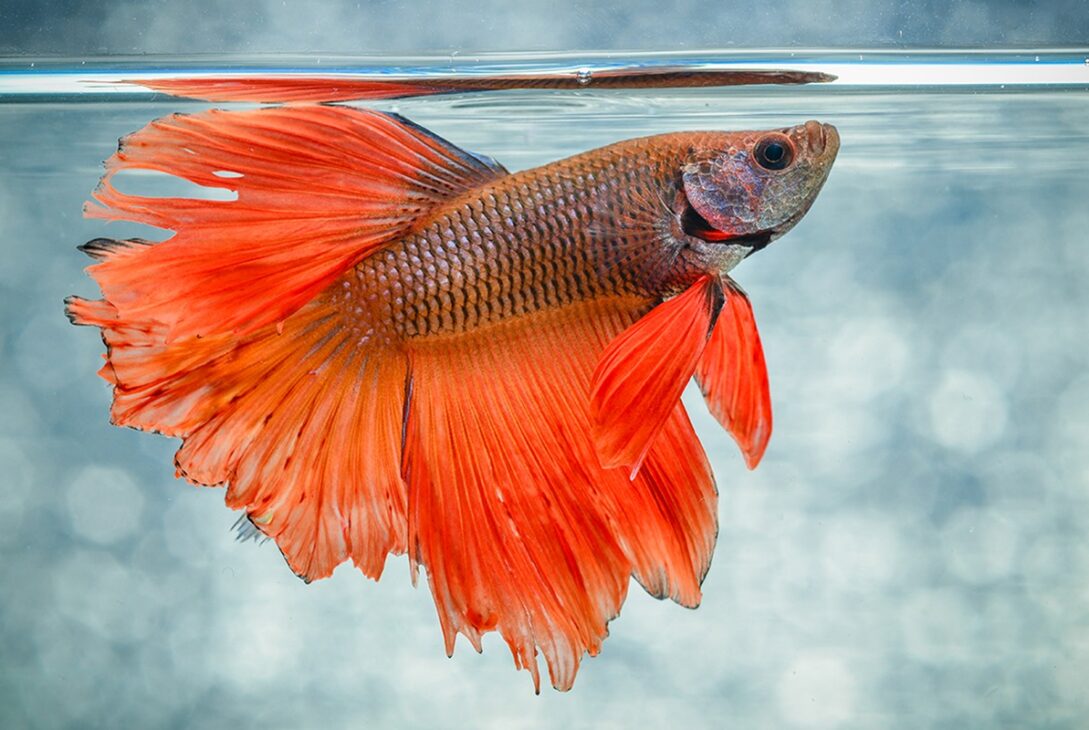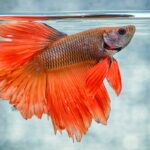Introduction
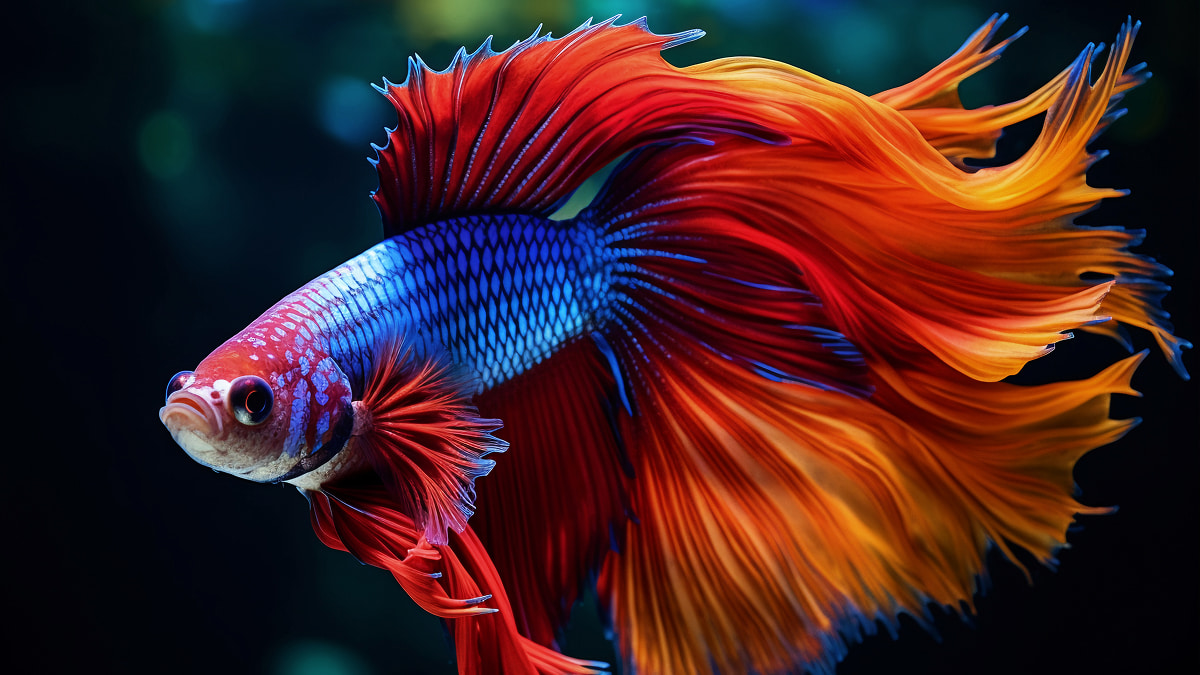
Betta fish, also referred to as Siamese fighting fish, are some of the most interesting colorful freshwater fish. They are adored because of their beauty, elaborate fins, and distinctive traits. These fish are native to Southeast Asia where they reside in shallow waters. They are used to low-oxygen habitats because of the labyrinth organ which allows them to breathe air. Despite their stunning appearance, Betta fish need adequate care in the form of a clean tank, diet rich in proteins, and good water conditions to maintain their health and longevity. Betta fish are known for their intelligence, they are able to recognize their owners, learn various tricks, and show other intricate behaviors such as flaring, bubble-nest building, and changing colors based on their mood. While people tend to associate these fish with aggression, it is possible for them to share a tank with peacefully placed tank mates under the right environment. To watch involves far more than just the care of these fish, however, because their breeding process is one of the most unique and fascinating displays of choreography where the male will take care of the eggs. Apart from being kept as household pets, Betta fish, due to their beauty, have been cherished in multi cultures and genetically modified to create different variations of fins and color patterns. A better knowledge of their myths, life cycle, breeds, and needs such as water temperature and pH help fish lovers create a better living environment for these beautiful creatures.
General Information About Betta Fish:

Origin and History
Betta fish are traceable to SouthEast Asia in countries like Thailand, Cambodia, Vietnam and Malaysia. They can be found in rice fields, stagnant ponds, and slow streams which are all shallow water bodies. Such environments have enabled them to adapt to low oxygen surroundings because of an organ called the labyrinth, which enables them to breathe air.
Originally, Betta fish were bred for their aggressive nature instead of their colors. In Thailand, these fish were bred for fish fighting competitions, for which the spectators’ placed bets on fighting skills and stamina. With time selective breeding increased their numbers, and allowed gleaming multi-colored betta to widely spread across pet shops.
Physical Characteristics
Domestic varieties have fins and tails in different shapes such as veil, crown tail, and placate. On the other hand, wild Bettas have a wide range of colors too while appearing rather dull in their colors. Domesticated betas possess vibrancy as they come in red, blue, purple, yellow, and metallic colors. The diverse colors and complex fins of the domestic betas make them appealing to many.
Male Betta fish are typically more colorful, have longer flowing fins, and are more elaborate than females. This difference in size and form makes males ideal for aquariums while females are valued for exhibiting social behavior and can live in sorority tanks.
Lifespan and Growth Cycle
- Some bettas can live as much as 7 years if they are exceptionally cared for in which their lifespan is on average 3 to 5 years.
- Their adult stage will generally be reached within 6 months where within that period their unmatched colors along with masterpiece shaped fins will come into full blossom.
- They will live longer with proper nutrition, clean water, and having an environment low in stress.
Intelligence and Trainability
- In conjunction with the standard traits of most fish, Betta fish rank IQ priority high amongst the rest of the pet fish.
- Tricks such as jumping through a hoop setc, fetch, or follow the finger can be offered as a means of expanding their comprehensive abilities.
- Fulfilling tricks using food as a reward allows greater use of their environment which boosts and enhances their activity level.
Unique Variations and Hybrids
- Through the years, breeders have been able to form Betta hybrids with intricate colors and exotic shapes and fins.
- Some of the wild-type Betta species such as Betta Embellish, also known as Peaceful Betta, and Betta Machineries have more variety with their behavior and looks.
- Certain Bettas have been bred with scales resembling the look of koi fish, while others are bred to have a more metallic scale look.
Environmental Adaptability
- Bettas can adjust to different tank conditions, although they grow better in steady surroundings with adequate heating and filtration.
- There are Betta keepers who construct biotope tanks with soft water rich in tannins and floating plants that mimic their natural habitat.
- Although bettas may live in little bowls, their long-term health and well-being suffers as a result of this.
Interaction with Other Fishes
- In a community tank, bettas can be housed together with other fish species as long as there are no compatible issues, which is a stereotype that has to be replaced.
- Together with other species, they can live with free swimming fish that are very calm and dont provoke attacks.
- Snails, shrimps, gentle and small metabolic active schooling fish, and corydoras catfish are some suitable tank mates.
Types of Betta Fish.
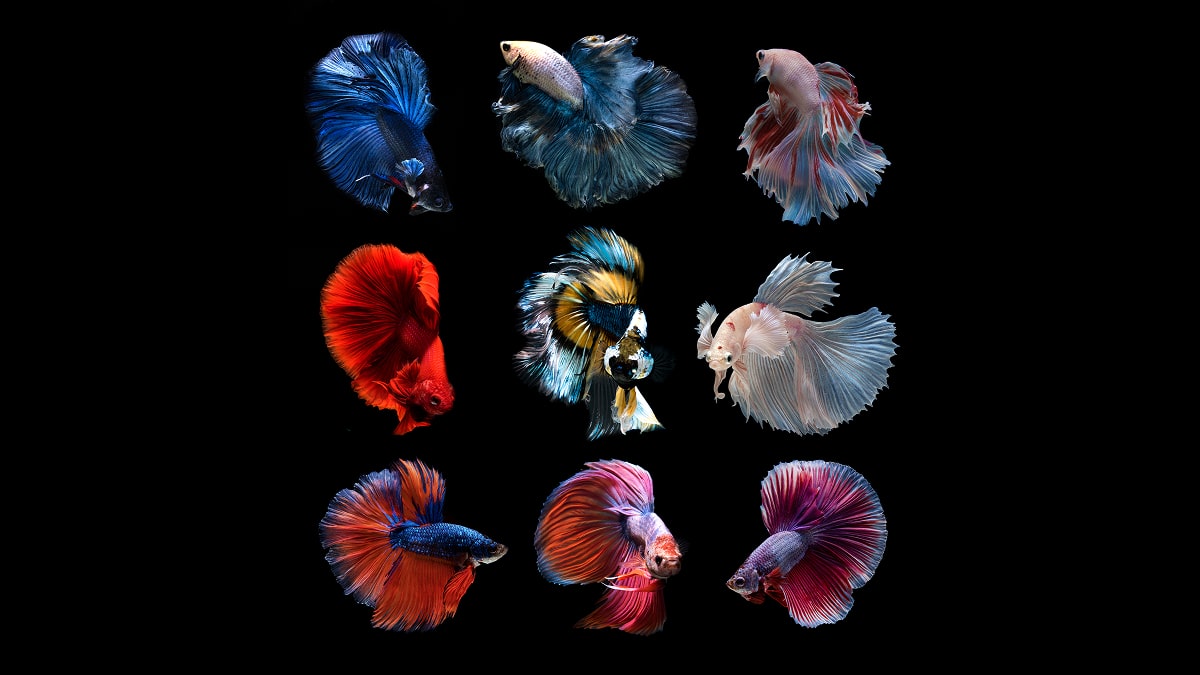
Some of the most significant varieties of Betta fish, which differ in the form of their fins and dorsal, and also in color and patterns include:
Crown tail Betta: The most eye-catching kind of crown-tailed Betta
Halfmoon Betta: This is a common type of Betta among fish breeders because of its very unique half-flower shape.
Placate Betta: This short-finned variety is more active than other breeds and looks more like its primitive forms.
Double Tail Betta: Very attractive type distinguished by the tail: it is split into two parts. This variety embraces a split tail style and has a more rounded body.
Veiltail Betta: One of the most common types of Betta Betta is distinguished long, flowing fins that drape downwards giving a veil-like effect to them.
Dumbo Ear Betta (Elephant Ear Betta): Known for its large head pectoral fins that are shaped like elephant ears providing elegance and poise.
Rose Tail Betta: A type of Halfmoon Betta with Rose flower inspired patterns on its fins that are excessively ruffled.
Delta Tail Betta: Possesses a tail with a triangular fanning opening but does not extend as far as the designated 180 degrees like the Halfmoon.
Dragon Scale Betta: Famed for its striking and bold appearance, adorned with thick metallic-like scales.
Mustard Gas Betta: Features bi-colored patterns with dark bodies and bright yellow or orange fins which makes it resemble the color of mustard gas.
Myths and Facts of Betta Fish
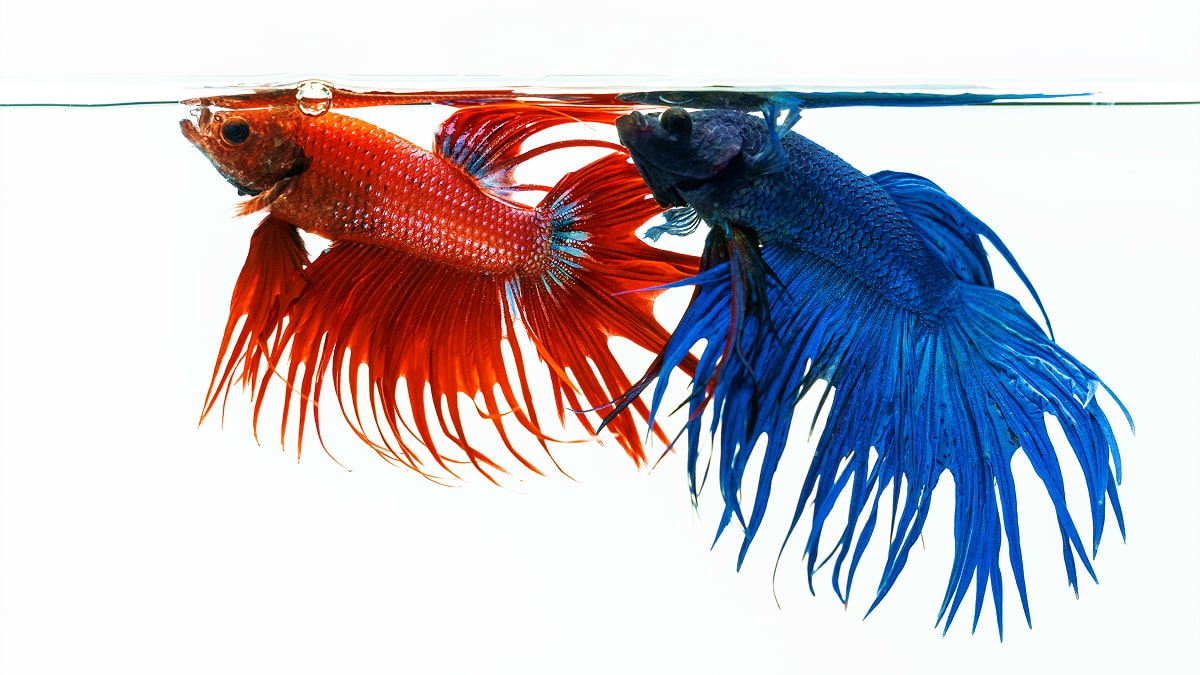
Betta fish are particularly famous due to their beauty and fascinating character, making them a very popular aquarium pet. Along with its phenomenal personality, Betta fish come equipped with lots of myths that cause a detrimental effect on so many who care for them. There are a lot of people who one way or another believe that gold fishes take the mulch center stage when it comes to household pets. We simplify a few myths about Betta fish.
Myth #1: Bettas Are Always Aggressive
Fact: The male of the betta species is known to be both aggressive and territorial so he will fight with other males. However, they do not attack indiscriminately, and with the right mates, they can live harmoniously with peaceful species like shrimps, snails, and some small fish. Aggression is also relative so some bettas could be more aggressive than others, and constant monitoring of behavior is necessary.
Myth #2: Bettas Can Breathe Only Water
Fact: Unlike the majority of fish, bettas have a labyrinth organ which enables them to draw in outside air. This feature helps them adapt in conditions which are low in oxygen. Not being able to breathe in dirty or stagnant water does not mean that they can be kept in filthy water conditions. In order to be healthy, regular maintenance of the tank and water changes are necessary.
Myth #3: Bettas Don’t Need Frequent Water Changes
Fact: Betta tanks are cleaner when a filter is included but they should be routinely changed to reduce toxins such as nitrate and ammonia. If left to circulate, dirty water will lead to stress, disease, and fin rot. For smaller tanks, a partial exchange of 25-50% of the old water should be done weekly to maintain a clean environment.
Myth #4: Bettas Only Live for a Year or Two
Fact: Keeping a Betta fish in good conditions can reward an owner with a lifespan of 3 to 5 years, and sometimes longer. This figure drops drastically if they live in squalor, have poor diets or suffer from incessant stress. Balanced diets, clean water and an environment free of stress helps them live to their full potential.
Myth #5: Bettas Change Color Due to Mood
Fact: Although Bettas do express some degree of excitement through their posture and fine movements, the changes in colors are a different case. Like the Marble Betta, some Bettas naturally change colors over time, but that is only a fraction of what influences color. Depression is similarly indicated by lack of bright colors in bettas. Color changes due to mood is a misconception and so are other health reasons like aging.
Myth # 6: Female Bettas Are Dull and Uninteresting
Fact: Selective breeding of bettas has led to more vibrant female betta varieties. Similarly, unlike popular opinion, females are not dull and lack flamboyant personalities. Female bettas do not suffer from the same restrictions as male bettas and can show off their colorful fins actively. Instead of suffering from the gaudy and miserable spectacle male bettas suffer due to “suffering” from long and extra flowing fins, female bettas can showcase their vibrant colors.
Myth 7: Bettas Can Recognize Their Owners
Fact: Betta fish are surprisingly intelligent and can recognize their owners over time. Betta responds to movement, feeding, and can even learn simple tricks such as jumping through hoops or following a finger. They make fascinating pets because of their interactive nature as well as beauty.
Breeding Betta Fish:
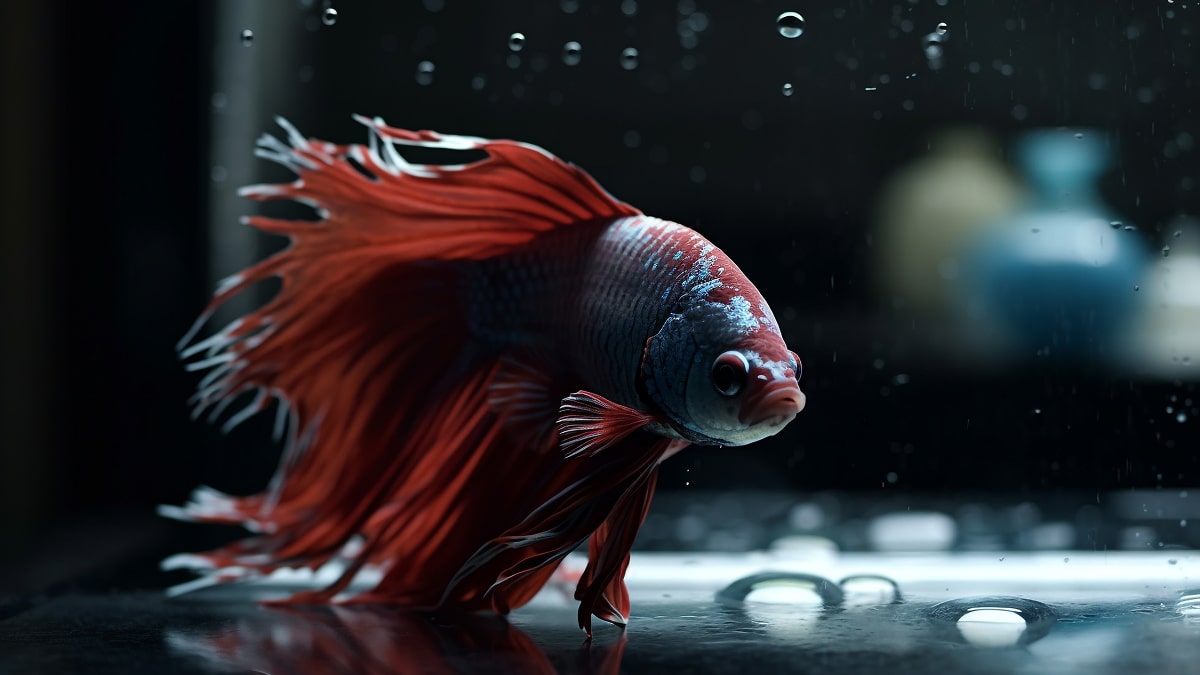
Betta Fish breeding can be rewarding as well as challenging and it requires diligent preparation, the right atmosphere, and ample time. Since Betta fish are aggressive and territorial, especially males, a lot of control is needed over space and strict supervision over the time. Here is a detailed procedure that will help you get started in successfully breeding Betta Splendens.
1. Selecting the Breeding Pair
Choosing healthy and compatible Betta fish is crucial for successful breeding.
- Male Betta: Should be active, colorful, and possess long flowing fins.
- Female Betta: Should possess vertical breeding stripes and prefer to have a round belly full of eggs.
- For conducive breeding, both should be four to twelve months old.
Tip: If you want to produce quality Betta fry, it is best to choose parents with desired traits – color, and fin type.
2. Setting Up The Breeding Tank
For best mating results, a breeding tank is necessary to provide the appropriate conditions.
- Tank Size: 5-10 gallons (without strong filtration as this would injure the fry)
- Water Temperature: For spawning, ensure the temperature is maintained at 78-82°F (25-28°C)
- Water Level: Approximately 5 inches to allow the fry to access the surface with minimum effort.
- Hiding Areas: Live plants or caves should be provided in case the male becomes overly aggressive so that the female is able to escape.
- Bubble Nesting Area: A floatable object like Indian almond leaves or a plastic lid should be added so that the male can build the bubble nest.
3. Conditioning the Betta Fish
Before putting the pair together, they should previously be conditioned to obtain high-protein diets to improve their overall health condition and readiness for breeding.
- For the first one or two weeks, feed them live or frozen foods such as bloodworms, brine shrimp, or daphnia.
- Put them in separate tanks but make sure they are able to see each other in order to build interest.
4. Introducing the Female to the Male
- Add the female Betta in a separate container with the breeding tank so that she and the male can see each other.
- The male will start flare his fins building a bubble nest.
- The female is prepared to mate when she starts developing vertical stripes and when she engages in submissive actions such as gently lowering her head.
5. The Mating Process
- After a positive interaction for 24 hours, the female can be let loose.
- It is perfectly normal for the male to pursue the female in a hostile manner. However, if the hostility is too much, the female needs to be taken away.
- If the female is accepting of the male, they will perform the embrace where the male positions himself around the female and squeezes out her eggs.
- The male will then collect the eggs and transfer them to the bubble nest.
6. After Spawning – Male Takes Over
- After spawning, the female needs to be removed right away because the male can become aggressive toward her.
- The male will take on the responsibility to protect the nest and make sure the eggs stay in position.
- The eggs will turn a little rudely between 24–48 hours, and the male will still be guarding them.
7. Raising the Fry
- After 3 days from being born, when the male fry starts to swim on their own, he needs to be taken away, so he does not eat them.
- Infusoria should be given to the fry for the remaining days and then he can be upgraded to baby brine shrimp or finely crushed Betta food.
- Change the water regularly to keep tanks clean.
8. Growth and Development
- The fry will acquire colors and fins after a couple of weeks.
- Place fighting males in separate tanks at four to six weeks old.
- They are ready to be sold or placed in individual tanks between the ages of eight and twelve weeks.
Behavior of Betta Fish
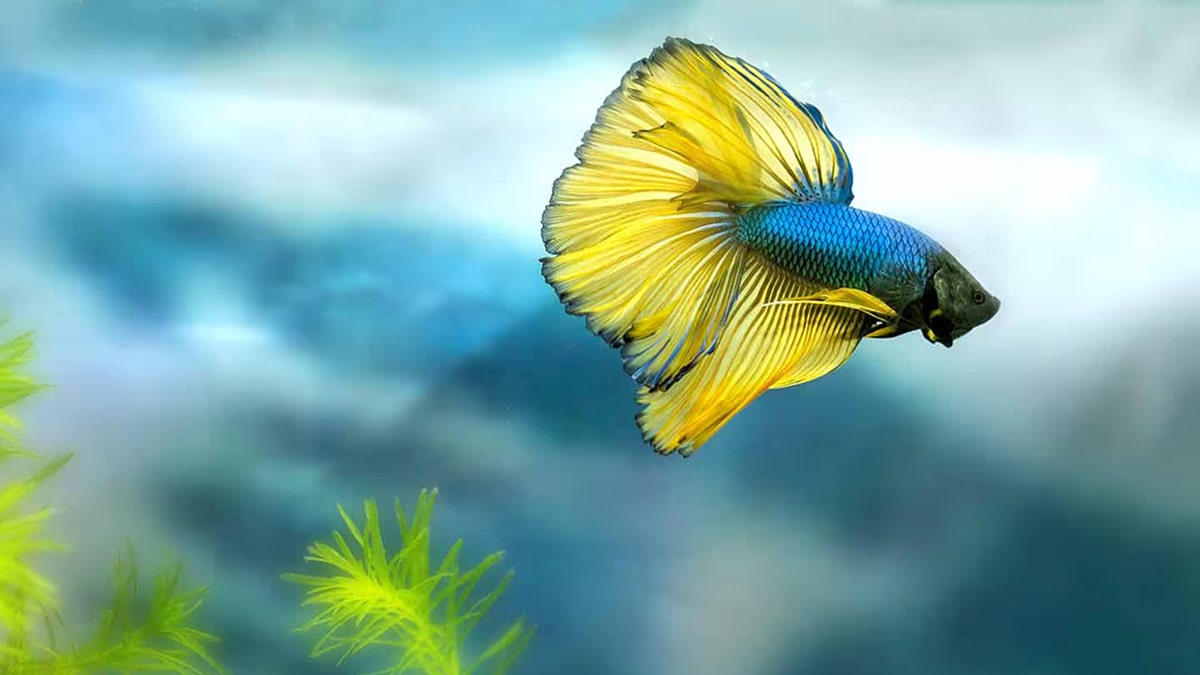
Wild Betta fish have a variety of different and complex characteristics which makes them very interesting fish to keep. The personality of each betta is different. While some are very sociable, some can be highly territorial and aggressive.
1. Aggressive and Territorial Nature
• Male Betta Aggression: Male Betta display high aggression to one another by attacking strongly, displaying a range of different behavior towards their fellow male Betta fish such as gill flaring and fin spreading. This behavior is deeply instilled in their genetics. They used to capture and utilize a wide range of bottle shaped fish tanks that gave them the capability to have some water, plants, and stones to fight for. This would allow them to have a massive amount of territories to fight over.
- Female Betta Social Behavior: Female Bettas are less aggressive than male Bettas and can sometimes be maintained in a sorority of 4 to 6 females, provided that the sorority tank is large enough and has adequate hiding spaces for the females.
- Flaring: Bettas puff their gills when they look to establish their dominance or feel threatened. This can happen when they come across their reflection or another Betta in close proximity.
Bubble Nest Building
- Male Betta fish construct bubble nests during the breeding season, floating just below the surface of the aquarium water.
- The presence of a bubble nest cannot be used as an indicator of the Betta’s health, as it can take on many shapes or sizes and some male Betta’s make nests without females present.
- Healthy and happy male Betta’s often display this behavior, as they do not require females to trigger nesting activity.
Interaction with Owners
- Bettas have shown signs suggesting that they recognize their owners and swim to the glass in excitement when they do.
- They are also capable of being trained to follow fingers, jump through hoops, and even push small objects in the water.
- Some Betta’s have developed the habit of hovering close to the surface of the tank and relying on food from their owners, which is quite an eye-catching behavior.
Sleeping and Resting Habits
- Bettas commonly sleep or rest on plants, tank decorations, and leaves or even at the very bottom of the tank.
- Hiding Excessively – Bettas enjoy resting, however if they are hiding more than usual, they may be sick or being bullied in community tanks.
How to Properly Take Care of Betta Fish

If you wish to have a healthy, beautiful, and happy Betta fish, you’ll need to take care of it properly. Although many people think of these pets as effortless to take care of, Bettas have their own needs which must be addressed. Here, we offer a complete outline on how to take care of your Betta fish from setting up the tank, to checking the water quality, feeding it, keeping it healthy, and much more.
1. Perfect Tank Set Up
Bettas are often thought of as pets that can survive and thrive in little bowls. This is a misconception. For long-term health, during the fish’s life, a proper tank set up is essential.
- Tank Size: A 5-gallon tank or larger is required for Bettas to be able to swim at ease. Any containers smaller than this will cause them stress, worsen the water quality, and shorten the lifespan.
- Tank lid: A lid set on the tank must be secure. Betta fish, at times, jump and a lid keeps them from making an undesired escape.
- Substrate and Decor: Smooth gravel, sand, or soil work best. Caves, silk, driftwood, and live plants can serve as decorations providing them with hiding spots. Make sure to never include sharp objects that can cause injuries to their fins.
2. Caring for Water Conditions and Other Maintenance Practices
Taking care of water hygiene is extremely vital for Betta fish health. If the hygiene conditions are poor, stress, diseases, and fin rots are on the horizon.
- Water Temperature: The water must be warm at all times and always range between 76-82°F (24-28°C). It is necessary to use a heater, especially when dealing with colder climates.
- Filtration: Maintaining water quality can be made easier with the use of filters. Strong currents are best prevented with sponge filters or adjustable-flow filters.
- Primary Water Specifications:
- Ph Level: 6.5-7.5
- Ammonia/Nitrites: 0 ppm (toxic at any level)
- Nitrates: Under 20 ppm
- Water Alterations: To prevent the buildup of waste and to ensure the well-being of the bettas, a 25-50% water change needs to be done weekly. Chemicals and chlorine should always be neutralized before water is added.
3. Correct Nutrition for Betta fish
- Bettas have to eat a high protein diet because they are carnivorous.
- Best Food Options:
- Betta pellets (staple food, very proteinaceous)
- Live or frozen foods (bloodworms, brine shrimp, daphnia)
- Freeze dried food as a special treat (do not forget to rehydrate)
- Feeding Routine:
- 2 times a day, feed 2-3 pellets each session. Portion control is key.
- Do not overfeed as it may lead to pollution in the water and bloating.
Other Species and their Friendliness

Bettas can be aggressive, but can cohabitate with small and peaceful species in large enough tanks.
- Mirror Play: Showing flaring mirrors for a few minutes a day may aid in muscle exercise. As a result, flaring should improve.
- Training and Toys: Toys such as floating leaves or leaf hammocks may also assist in keeping their attention. Certain species of bettas even perform tricks like finger follow and hoop swim.
- Live Plants: The moss ball, Anubis, and Java Fern are live plants that can be added in the tank. All of them enhance the quality of the water while offering natural shelter.
How to Detect an Happy Betta Fish
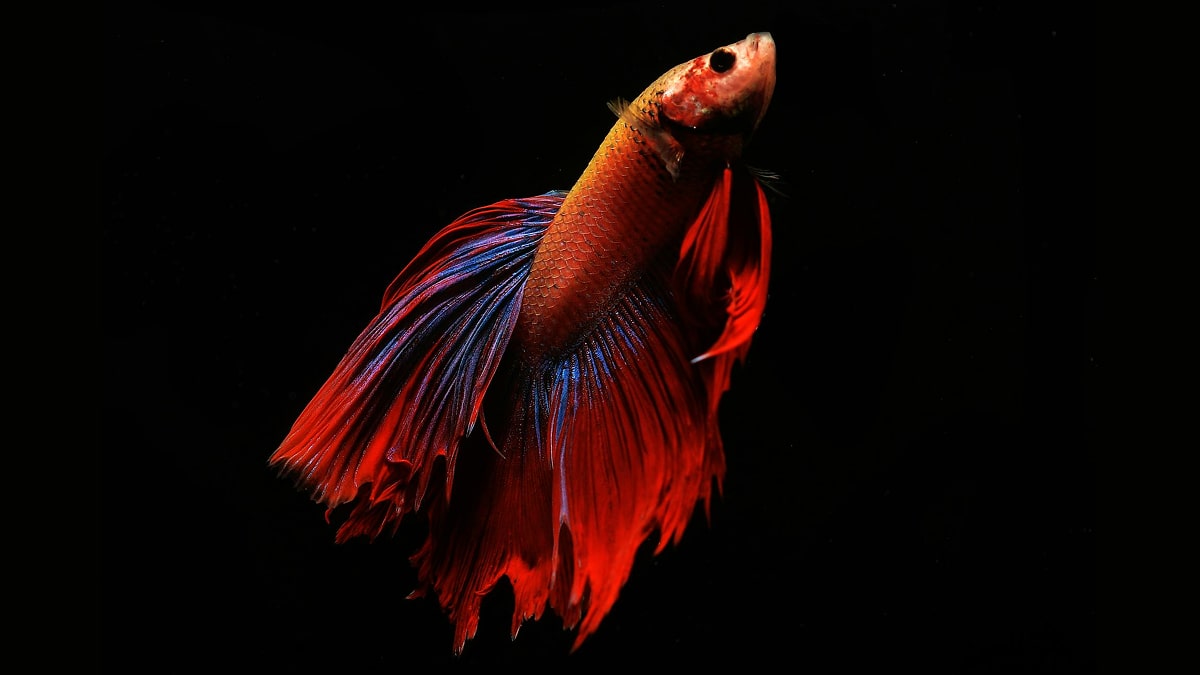
A properly taken care of Betta should show:
- Distinct colors
- Swimming around more (not excessively hiding)
- Shows signs of a healthy appetite
- Keeps constructing bubble nests (males do this often)
- Active, moves in response to stimulus outside of the tank.
Conclusion
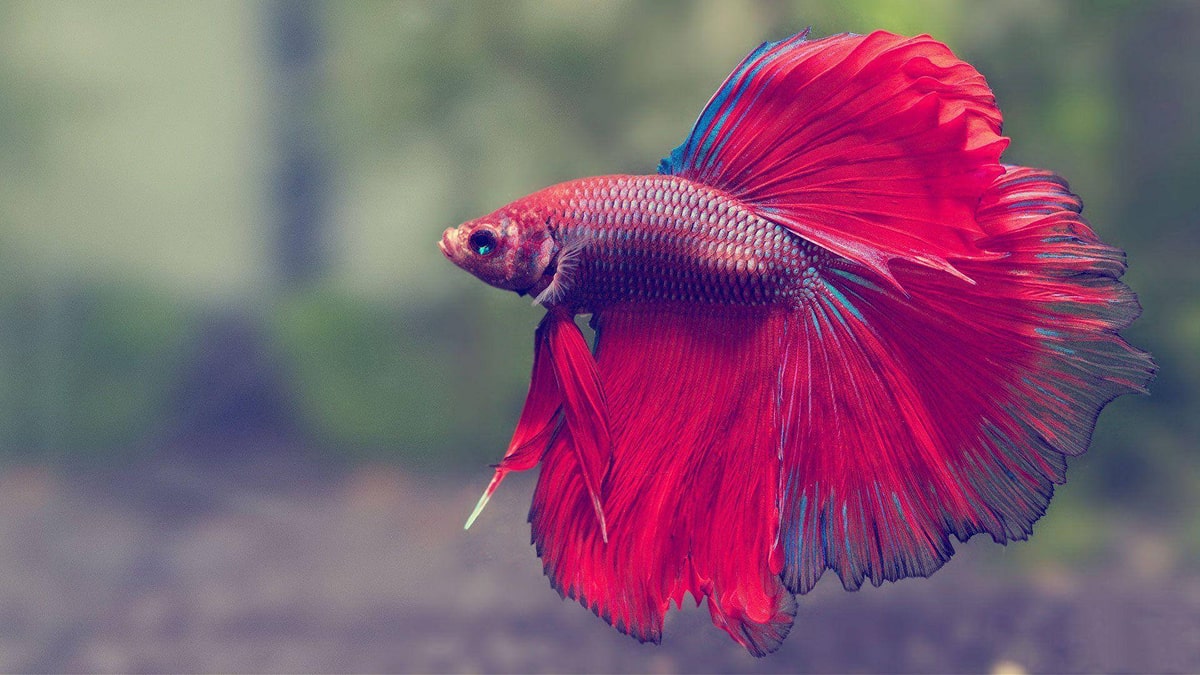
Lastly, Betta fish serve an aquarium as a lifestyle rather than as a simple ornament. They are active, engaging pets that are ready to adapt to the demands of its owner. There are several false beliefs surrounding Betta fish which can lead to their suffering, so providing the optimal conditions and diet is of utmost importance. The fact that they can bond with their owners, exhibit distinct behaviors, and flourish in well set up surroundings, makes them a good choice for fish lovers. Betta fish do not cease to impress aquarists all over the world and, regardless of their special beauty, behavioral peculiarities, and breeding value. So long as their instincts are honored, these amazing fish can be kept in conditions that suit them best.
Last modified: March 11, 2025

